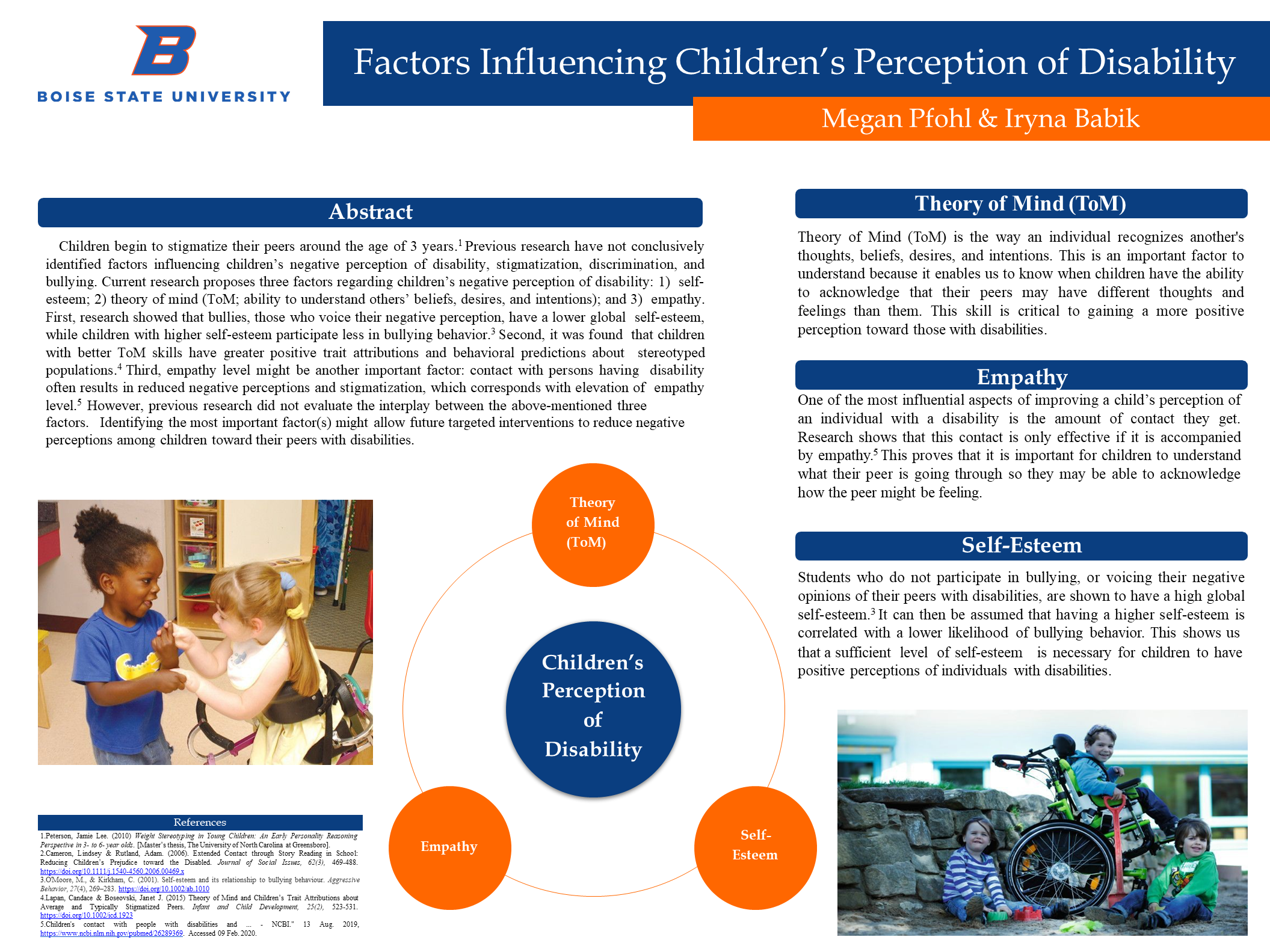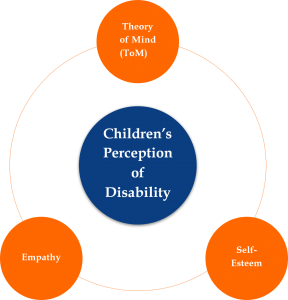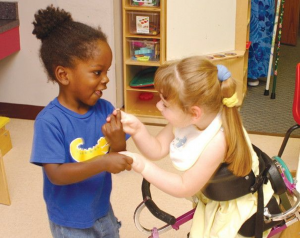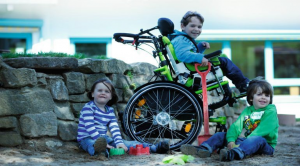Megan Pfohl, Dr. Iryna Babik

Abstract
Children begin to stigmatize their peers around the age of 3 years. (reference number 1)

Previous research have not conclusively identified factors influencing children’s negative perception of disability, stigmatization, discrimination, and bullying. Current research proposes three factors regarding children’s negative perception of disability:
- self-esteem;
- theory of mind (ToM; ability to understand others’ beliefs, desires, and intentions); and
- empathy.
First, research showed that bullies, those who voice their negative perception, have a lower global self-esteem, while children with higher self-esteem participate less in bullying behavior. (reference number 3)
Second, it was found that children with better ToM skills have greater positive trait attributions and behavioral predictions about stereotyped populations. (reference number 4)
Third, empathy level might be another important factor: contact with persons having disability often results in reduced negative perceptions and stigmatization, which corresponds with elevation of empathy level. (reference number 5)
However, previous research did not evaluate the interplay between the above-mentioned three factors. Identifying the most important factor(s) might allow future targeted interventions to reduce negative perceptions among children toward their peers with disabilities.
Theory of Mind (ToM)

Theory of Mind (ToM) is the way an individual recognizes another’s thoughts, beliefs, desires, and intentions. This is an important factor to understand because it enables us to know when children have the ability to acknowledge that their peers may have different thoughts and feelings than them. This skill is critical to gaining a more positive perception toward those with disabilities.
Empathy
One of the most influential aspects of improving a child’s perception of an individual with a disability is the amount of contact they get. Research shows that this contact is only effective if it is accompanied by empathy. (reference number 5) This proves that it is important for children to understand what their peer is going through so they may be able to acknowledge how the peer might be feeling.
Self-Esteem

Students who do not participate in bullying, or voicing their negative opinions of their peers with disabilities, are shown to have a high global self-esteem. (reference number 3) It can then be assumed that having a higher self-esteem is correlated with a lower likelihood of bullying behavior. This shows us that a sufficient level of self-esteem is necessary for children to have positive perceptions of individuals with disabilities.
References
- Peterson, Jamie Lee. (2010) Weight Stereotyping in Young Children: An Early Personality Reasoning Perspective in 3- to 6- year olds. [Master’s thesis, The University of North Carolina at Greensboro].
- Cameron, Lindsey & Rutland, Adam. (2006). Extended Contact through Story Reading in School: Reducing Children’s Prejudice toward the Disabled. Journal of Social Issues, 62(3), 469-488. https://doi.org/10.1111/j.1540-4560.2006.00469.x
- O’Moore, M., & Kirkham, C. (2001). Self-esteem and its relationship to bullying behaviour. Aggressive Behavior, 27(4), 269–283. https://doi.org/10.1002/ab.1010
- Lapan, Candace & Boseovski, Janet J. (2015) Theory of Mind and Children’s Trait Attributions about Average and Typically Stigmatized Peers. Infant and Child Development, 25(2), 523-531. https://doi.org/10.1002/icd.1923
- Children’s contact with people with disabilities and … – NCBI.” 13 Aug. 2019, https://www.ncbi.nlm.nih.gov/pubmed/26289369. Accessed 09 Feb. 2020
Additional Information
For questions or comments about this research, contact Megan Pfohl at meganpfohl@u.boisestate.edu.